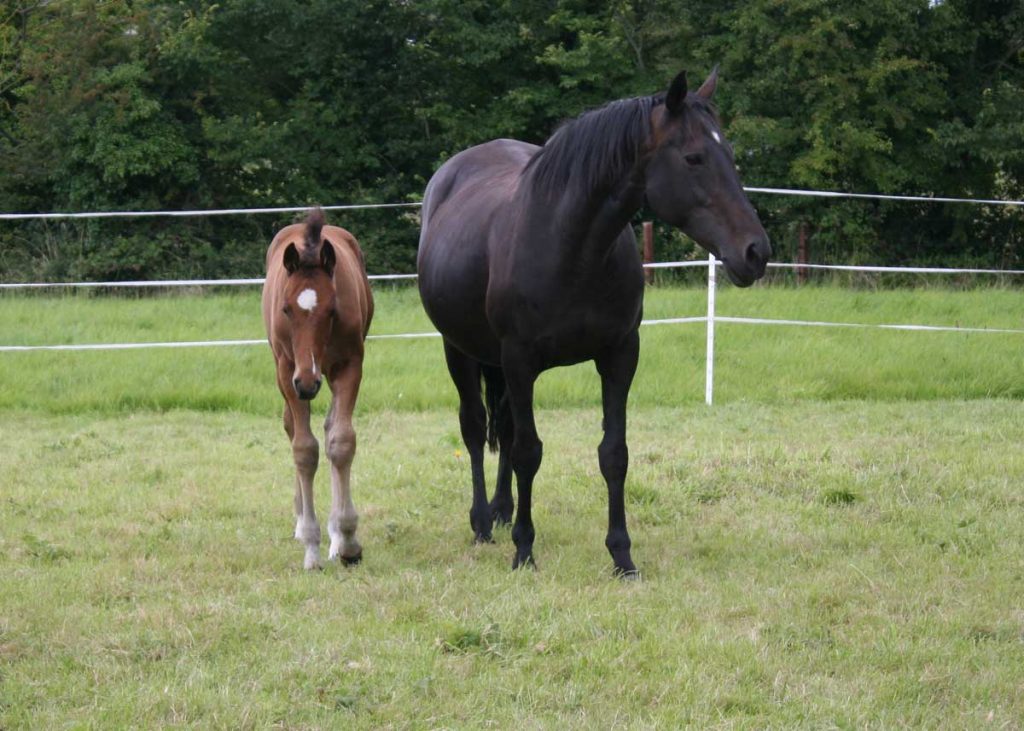The next steps in breeding your mare

Following on from our previous article ‘The question of breeding’ in which our equine veterinary expert Nikki Walshe considered the important question of whether or not you should breed from your mare, in this article Nikki considers the next steps you should take to give your mare the best chance of conception and in producing a healthy foal.
When should I get a pre-breeding check done on my mare?
In short, when the mare is beginning to cycle again, so usually in the middle/late spring time.
The natural breeding season of the mare is usually late spring and summer. The mare also has a period of cyclic inactivity (anaestrous) when she cannot be bred during the winter. There are two transitional periods between when the mare is cycling and the anoestrous period, which usually take place in autumn and early spring. During the transitional period mares are very unpredictable and will often grow follicles but not ovulate, so breeding at this time is not possible.

Are there any ways of getting my mare to cycle early?
Day length and thus light exposure is one of the main factors to influence mare’s cyclic activity. The photoperiod (the amount of light the mare is exposed to) can be manipulated by leaving a bright light on in the stable from mid-December, which can bring the mare into season fractionally earlier than normal.
In addition, factors such as temperature and nutrition can be used to encourage a mare to start cycling. Stabling and using rugs to keep the mare warm can assist with shortening her period of anoestrus. An increase in her nutritional plane can help but please ensure her diet remains balanced. Over feeding can predispose mares to laminitis which is already a risk factor for broodmares.
What is the mare’s breeding cycle?
The oestrous cycle is generally 21 days long (+/- 2/3 days), and can be divided into two phases, the follicular phase and the luteal phase. The follicular phase (oestrus) is when the mare is in ʻseasonʼ. This can last for 4-7 days and during this period the mare display signs that she wants to be bred e.g. posturing to urinate and raising her tail (particularly in the presence of a stallion). The remaining time is the luteal phase (dioestrus) which starts just after the mare ovulates. The mare will actively display signs that she does not want to be bred e.g. squealing or kicking out at the stallion.
What is involved in determining when to breed your mare?
This depends on the method of breeding, however in short we try to get the mare inseminated as close to ovulation as possible.
The lifespan of fresh semen can be as long as 48-72 hours, whereas chilled semen may remain viable for 12-36 hours. In contrast, frozen semen may only remain fertile for up to 24 hours, and in most cases can lose its viability by 6 hours after thaw. The egg (ovuum) has a life span of about 6-8 hours so ideally the mare should ovulate close to the time of insemination or after insemination.
In the light of these figures, veterinary intervention using ultrasound scanning is essential to monitor the mareʼs cycle and manipulation of this is necessary to achieve a high pregnancy rate.
Please note that our veterinary articles are written to give you insights and understanding of common equine veterinary problems and are not intended to take the place of a veterinary examination by your own vet. If in doubt, always call your own vet should your horse require attention.
Share this article with fellow horse lovers by using the share buttons below.
